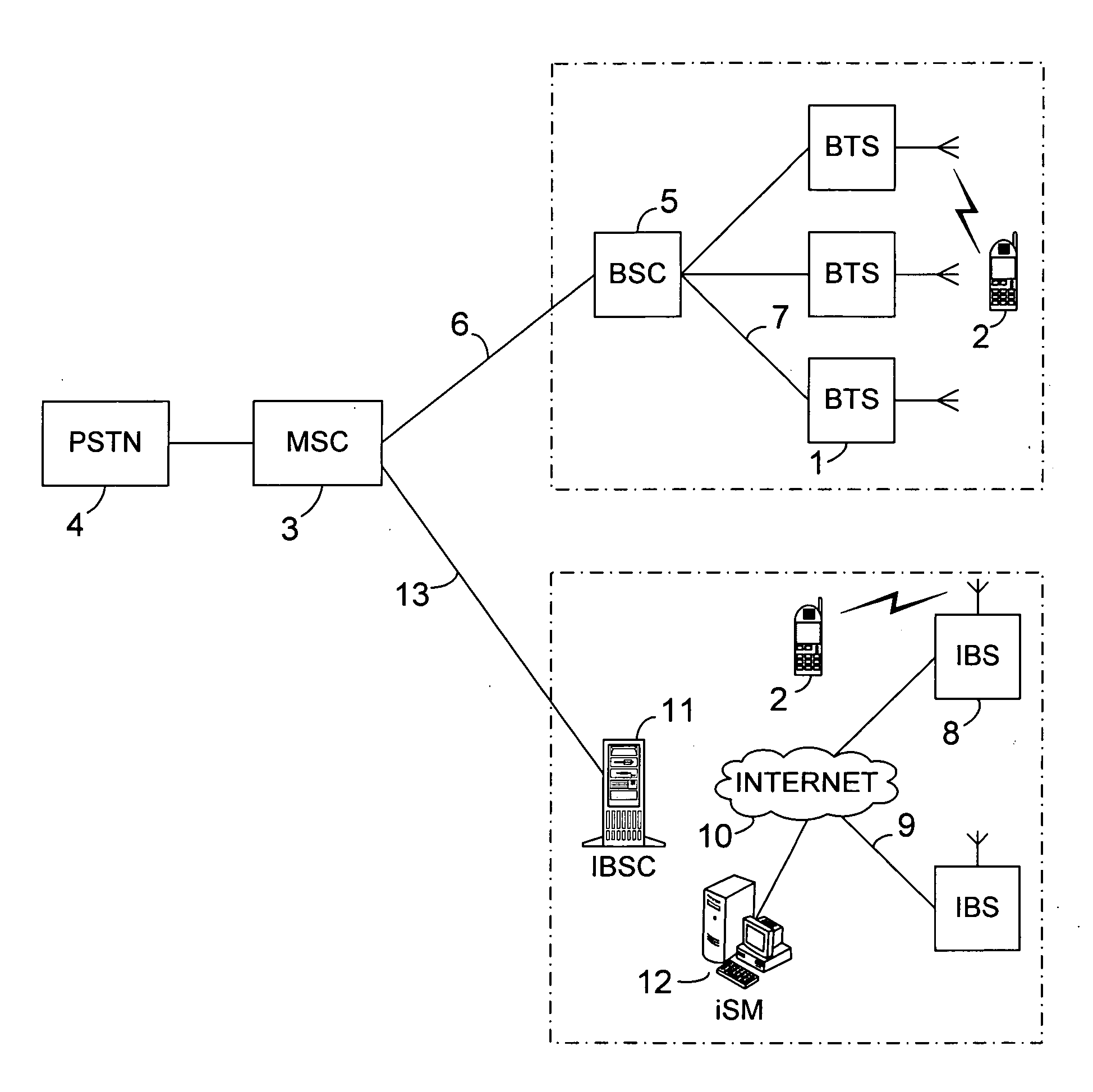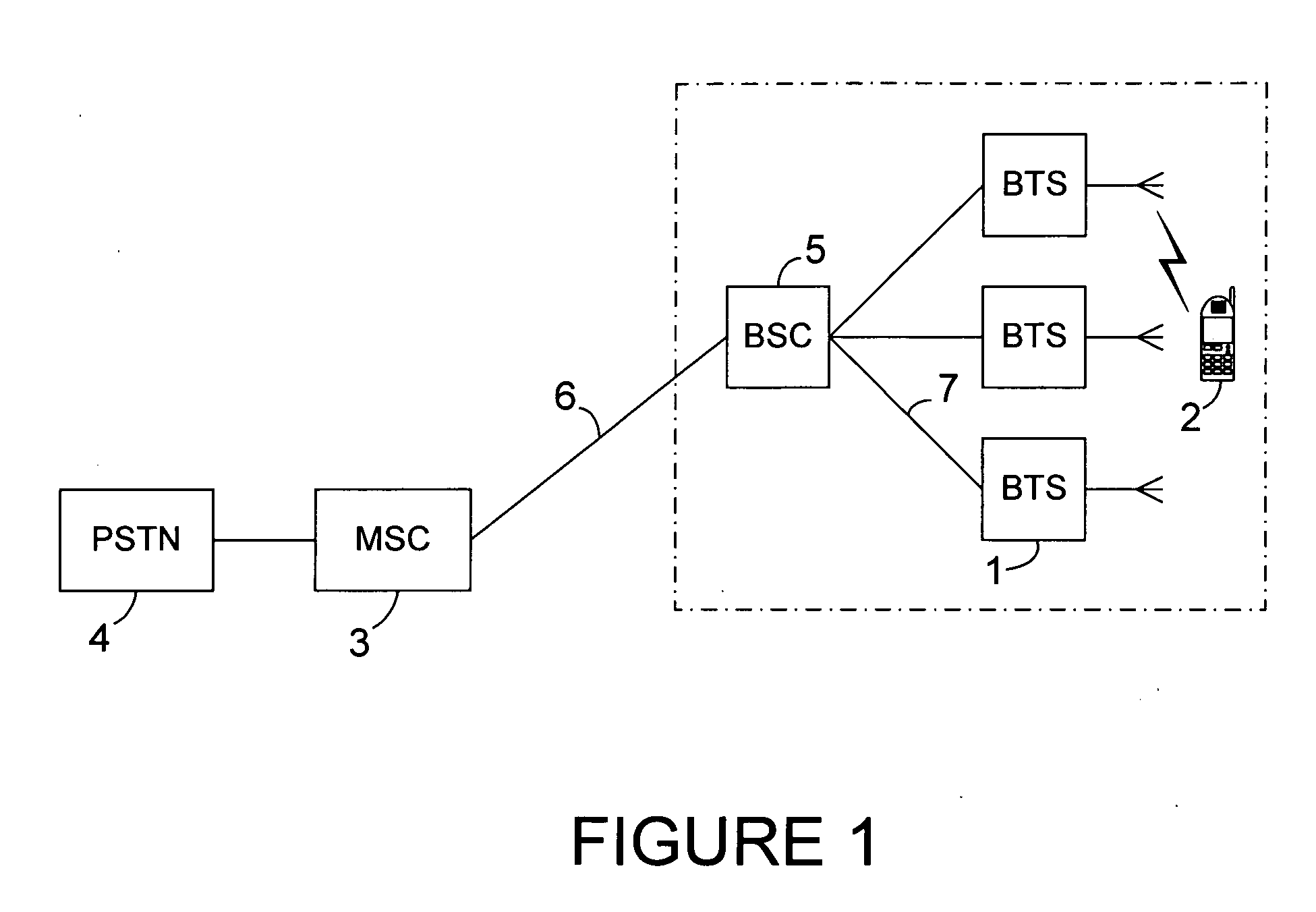System and method for automatically configuring and integrating a radio base station into an existing wireless cellular communication network with full bi-directional roaming and handover capability
a wireless cellular communication and radio base station technology, applied in the field of wireless communication, can solve the problems of time-consuming and error-prone tasks, complex configuration and integration of new base stations, and immense effort and cost of this work, so as to minimize transmission resources, optimize interoperation, and high densities
- Summary
- Abstract
- Description
- Claims
- Application Information
AI Technical Summary
Benefits of technology
Problems solved by technology
Method used
Image
Examples
Embodiment Construction
[0019] As an exemplary embodiment, an iBS supporting the GSM standard and the parameters and procedures necessary for its integration into and operation in a GSM mobile communication network is described. The invention is however not limited to GSM technology but supports other technologies, such as CDMA, iDEN and 3G / UMTS, as well.
[0020] 1. Investigation of Radio Environment
[0021] When an iBS is switched on it will investigate its radio environment and then define, with the aid of the iBSC and / or iSM, a number of parameters necessary to integrate into and operate in an existing mobile communication network.
[0022] The iBS's receiver is able to receive not only in the uplink band, its normal band of operation, but also in the downlink band in which Mobile Station (MS) receivers normally operate.
[0023] When switched on, the iBS will first scan the entire downlink frequency band, like an MS would when switched on. Through this downlink band scan the iBS will identify macrocells oper...
PUM
 Login to View More
Login to View More Abstract
Description
Claims
Application Information
 Login to View More
Login to View More - R&D
- Intellectual Property
- Life Sciences
- Materials
- Tech Scout
- Unparalleled Data Quality
- Higher Quality Content
- 60% Fewer Hallucinations
Browse by: Latest US Patents, China's latest patents, Technical Efficacy Thesaurus, Application Domain, Technology Topic, Popular Technical Reports.
© 2025 PatSnap. All rights reserved.Legal|Privacy policy|Modern Slavery Act Transparency Statement|Sitemap|About US| Contact US: help@patsnap.com



